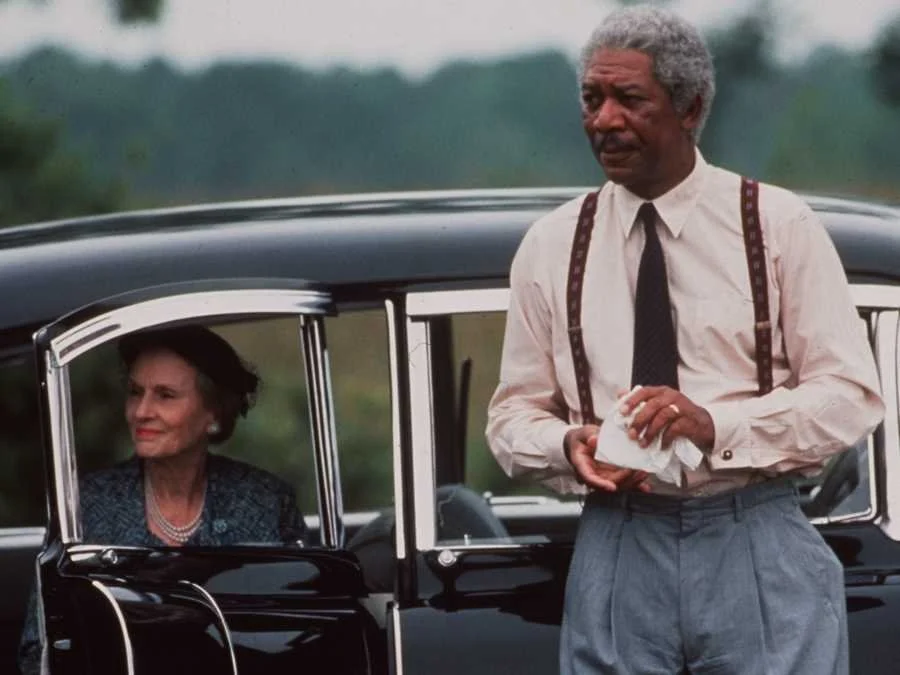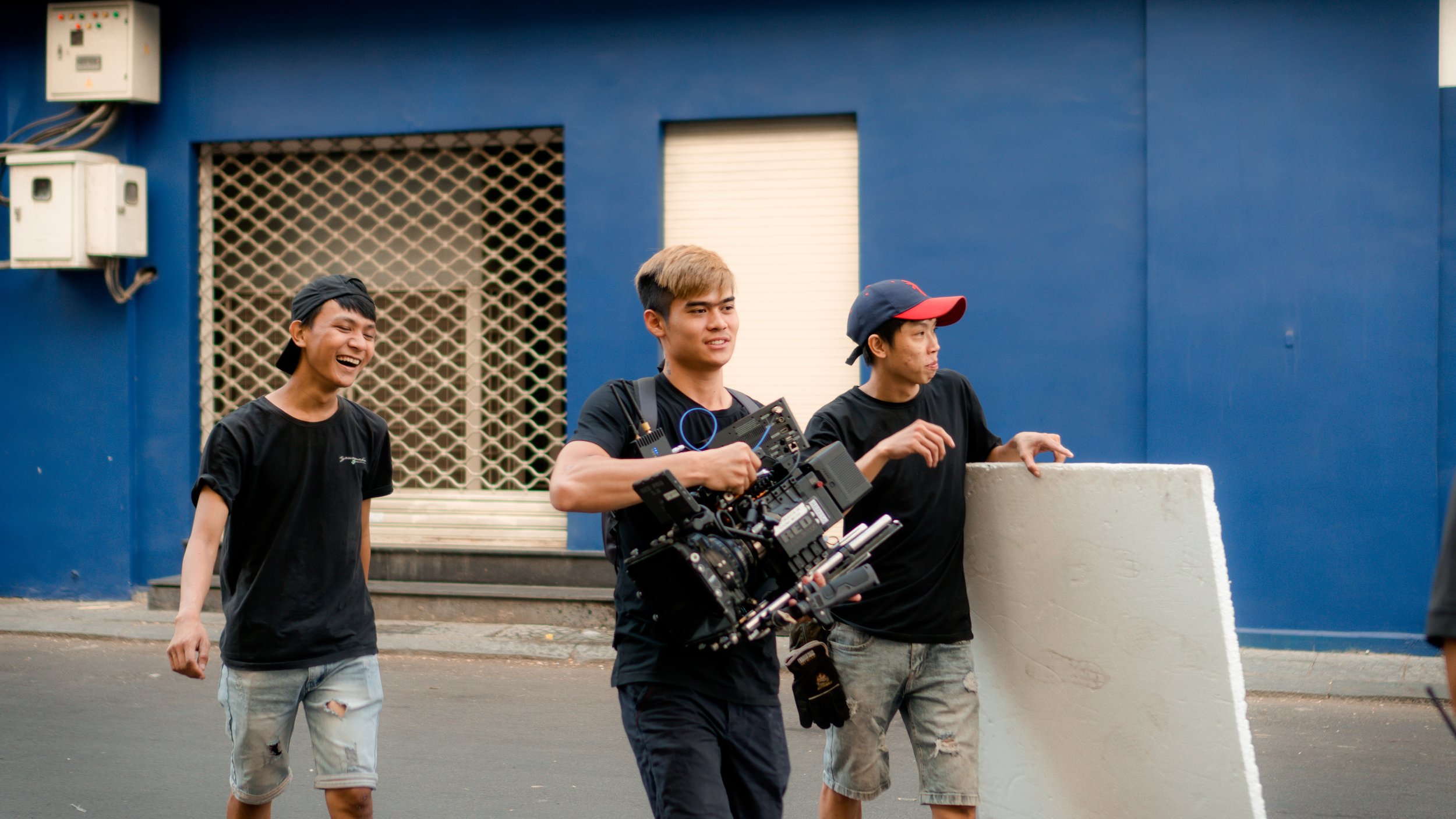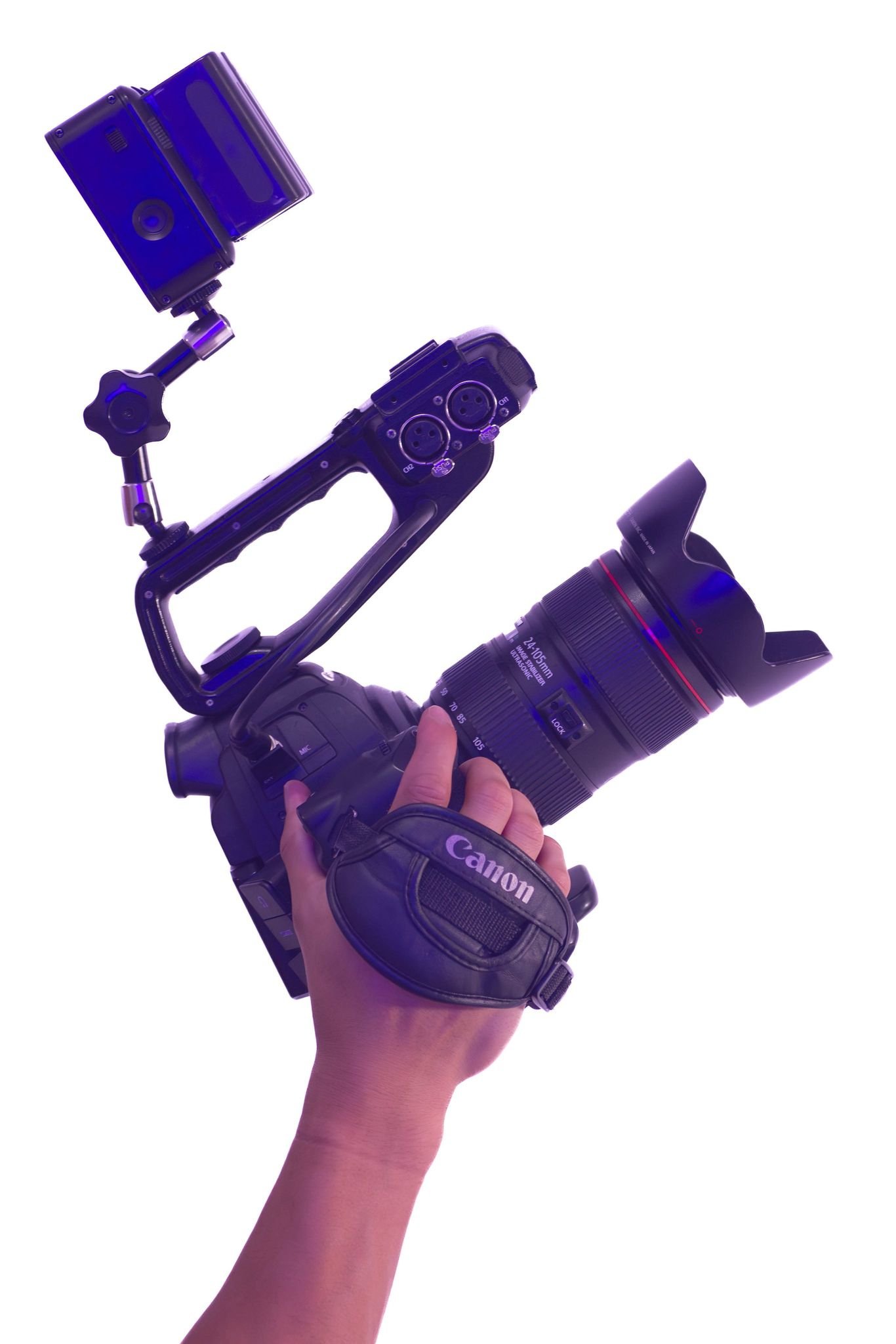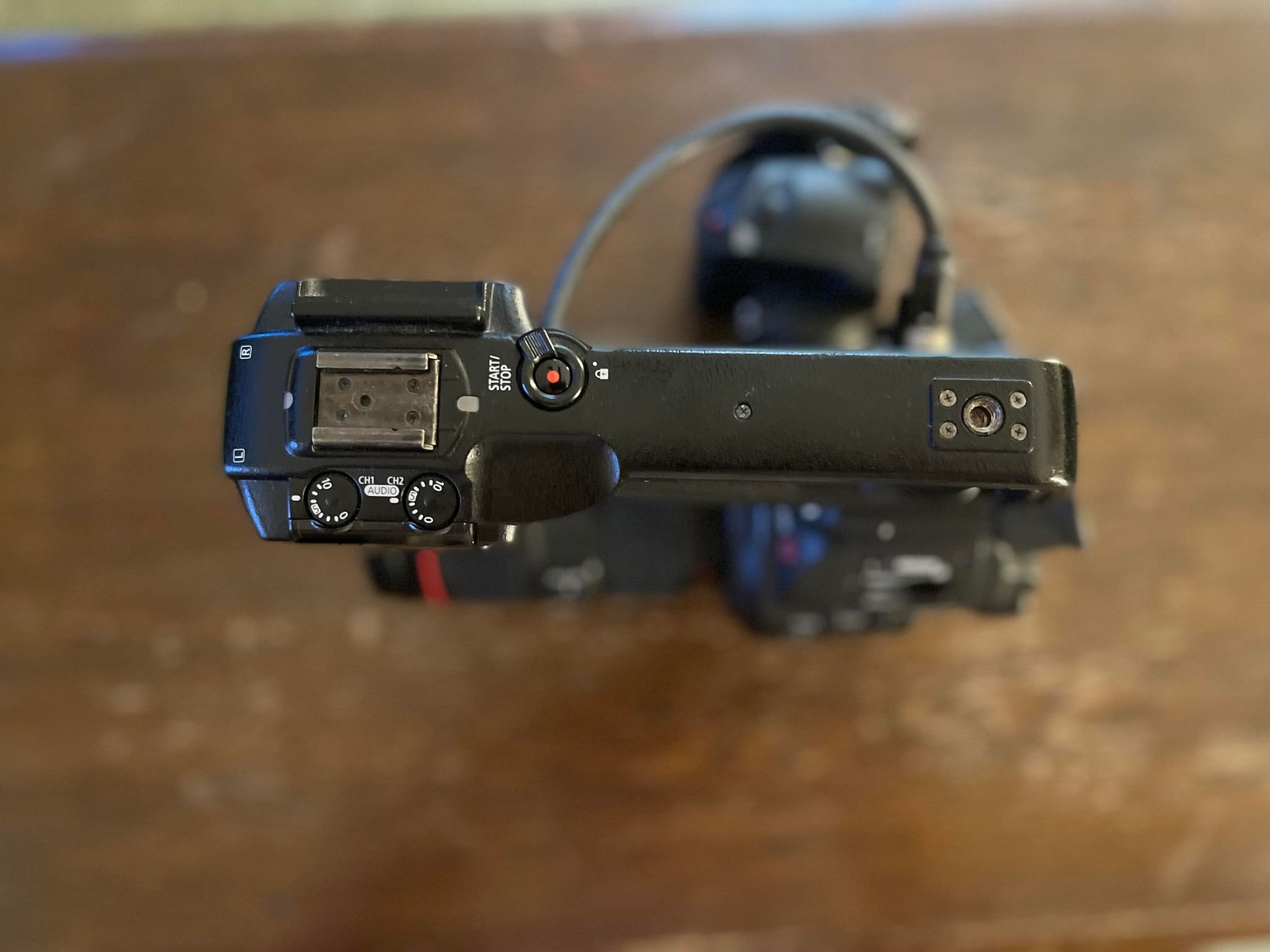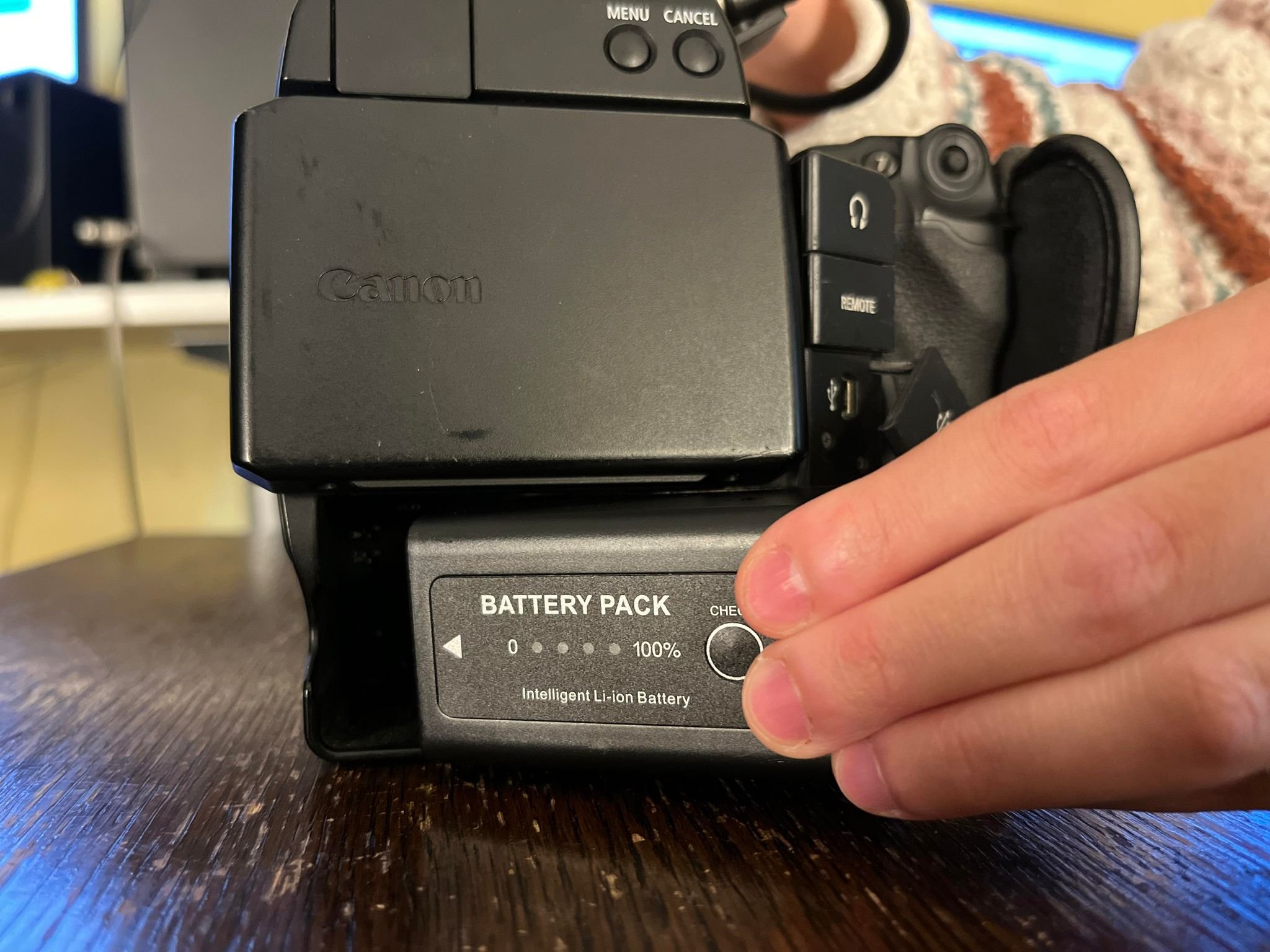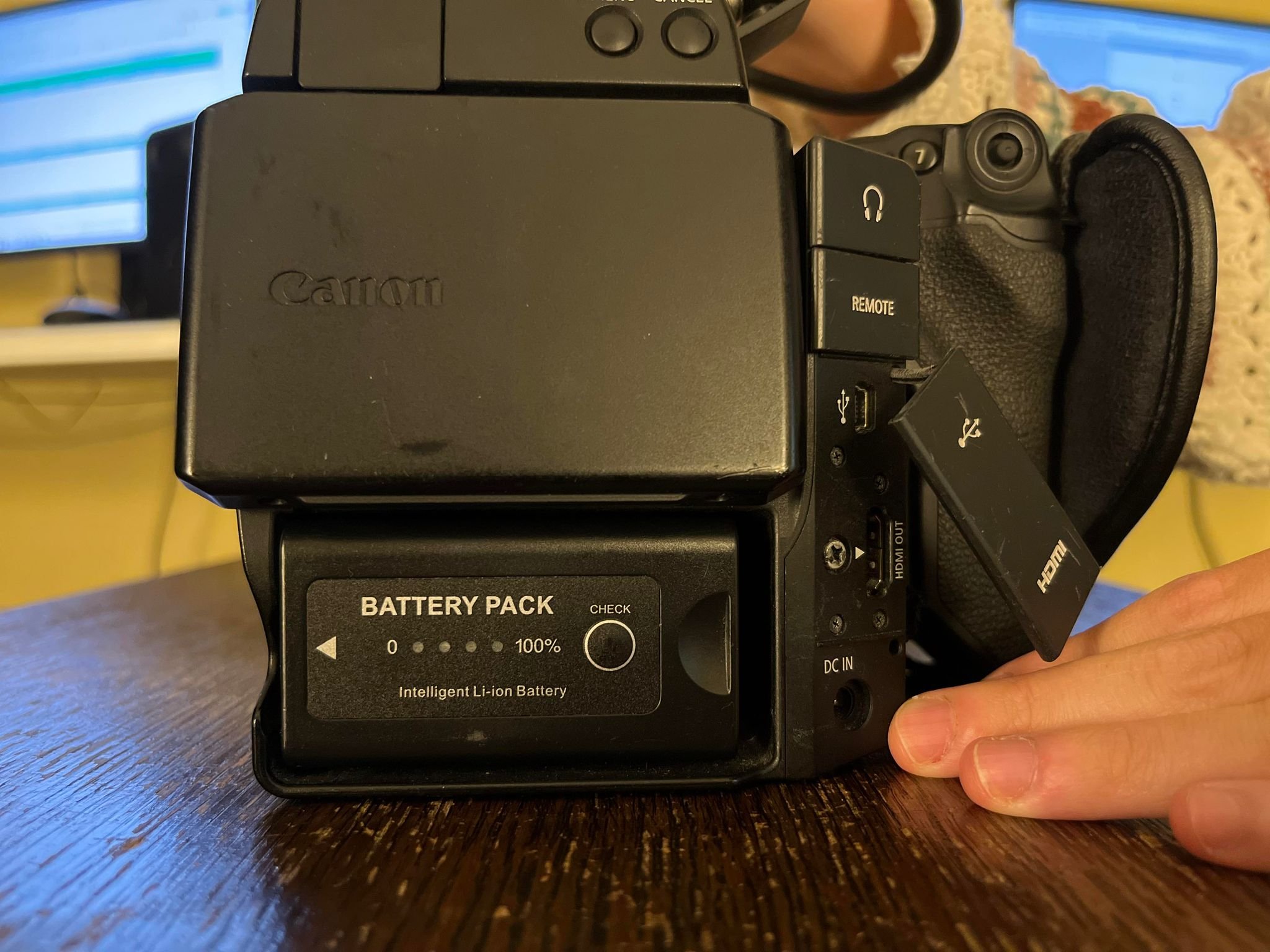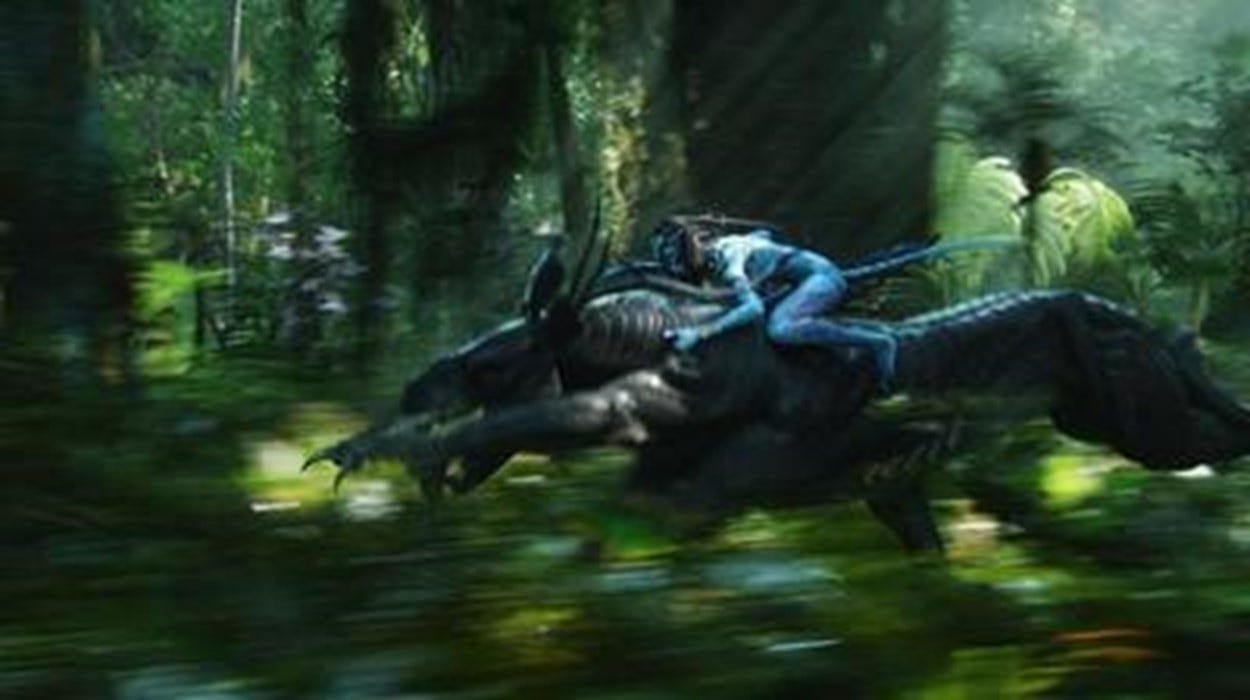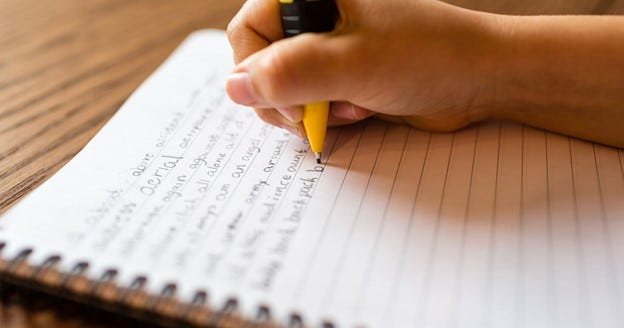Opinion: Out of Tune: The struggle to get the musical biopic right
Review: All We Imagine as Light
Opinion: The Lackluster State of the Canadian Film Industry
Opinion: The Death of the Western
Review: Surveilled (2024)
Classic Review: Unzipped (1995)
Opinion: Why do old movies feel warmer than the nihilistic dominance of today?
Review: Fanatical: The Catfishing of Tegan and Sara (2024)
Review: Subject to Review (2019)
Opinion: Are the movies we love inherently political?
10 Creative and Cheap Ways to Find Locations for Your Film
by Kennedy Kao
In my experience, finding locations can be one of the more exhausting parts of pre-production. If you’re working with a small budget, there’s a good chance you’ll have a quaint number of options to choose from. But, as the great Orson Wells said, “The enemy of art is the absence of limitations.” To translate: embrace your low budget, use what’s available, and parlay your limitations into a profoundly moving piece of art that will only be possible with limitations!
Easier said than done, I know. But your film needs to be made and trust me, finding locations can be possible for the cheapest situations. Here are some ways I’ve managed to find locations for my short films.
1. Location Scout—Then Ask for Permission
No tricks or secret techniques here. If you’re looking for street exteriors, alleyways, restaurants, classrooms, even apartments or houses, nobody is stopping you from conducting a proper location scout and asking for permission. Pinpoint where you think your desired location will be (Google Maps will help a lot here), walk around the area and see if anything catches your eye. Then, very politely and professionally, ask anyone who owns the property if you can film.
It helps to bring a producer along (or anyone, for that matter) to make talking to random strangers less daunting. It also helps to bring a business card so they know you're legit.
Above all else, make sure to have your pitch to the property owner rehearsed. You want to sound clear, professional, and straight to the point. If someone rejects you, don’t push or try for a second time. There are plenty of other locations out there you can pine for!
You should make clear the following points when you ask for permission to use a location:
How you would use the location
What the project is about
Date/time of shooting
Whether there is compensation involved
Contact information
2. Facebook Groups
If you’re in Toronto, there are a wealth of Facebook filmmaking groups where you can inquire about anything related to film. Plenty of posts ask if anyone has a (insert your location here) available for filming. Below are some of my favourite Facebook groups (note that you’ll have to ask for permission to join before making a post):
TIP: When making a post asking about locations, include all necessary information and clear instructions on how people can contact you. This will be a theme for most of the methods listed here: be clear and thorough with any information you pass along.
3. Location Scouting Websites
If you have the money to spend on locations, consider the following websites. Like Airbnb or any real estate page, these websites will display a catalogue of locations you can browse through and inquire about.
Make sure you schedule visitations when selecting a location. Just like renting an apartment or buying a house, you want to ensure you fully get what is advertised. Be mindful that some of these websites are living spaces offered by actual tenants; therefore, you might have to coordinate with them to schedule optimal shooting dates.
4. Airbnb
I’ve mentioned Airbnb: Airbnb is a great option as well. Similar to websites like Setscouter and PeerSpace, you can browse for potential shooting locations with relative ease.
However, be upfront and let the Airbnb owner know you plan filming on their property. Some Airbnb’s might take issue with filming, no matter how small or low-budget your production is.
5. Friends and Family
Until they’re sick of you asking them, friends and family are always a reliable resource to find locations. Be clear with what you’re using the space for and grab them lunch as a thank you. In the spirit of Mark Borchardt (American Movie), you might want to ask them to invest further:
Here's a piece of advice for low-budget filmmakers looking for a living space to film in. Think of anybody you know who is similar to the character you are looking for a location for. Ask whoever comes to mind if you can use their living space. Suppose they say yes, well, great! But additionally, you maybe won’t have to do much production design. Another way to save some money!
6. Film Schools or student communities
If you attend a film school, you must be privy to the locations made available to students. However, access to these locations might seem far-fetched if you don’t attend a film school.
Film schools can offer shooting studios, booths, and sets that might service your production well. Richard Linklater got his start by sneaking into his friend’s film school classes and borrowing equipment on their behalf. You don’t have to go that far, but ingratiating yourself within a student film community (like the Hart House Film Board, wink, wink), can give you access to many more resources besides locations.
7. Networking Parties
Speaking of ingratiating yourself with a community, you can easily connect with other filmmakers by attending networking parties, film screenings, events, etc. By making connections, you’ll have easier access to a potential cast and crew that can help with your location scouting.
Some of the well-known Toronto film networking events are listed below:
Hart House Film Board Monthly Meetups (yes, we will put ourselves right below TIFF)
8. Putting up Signs
This might seem old-fashioned, but it can be pretty effective! Create a flashy, eye-popping poster with all relevant info and look for areas to put them up. For instance, if you’re looking for a house in the suburbs, look to put up signs in nearby plazas or available park lamposts.
Don’t put down your phone number or home address for contact information; you might get crank callers or unwelcome guests. Putting down your email address or a QR code for your social media or website is much safer.
9. Use What’s Available
Sometimes all that you’re looking for is right in front of you. Or around you. In very student-film fashion, you can use your cast’s houses if suitable. Or you can ask your crew if they could lend their spaces. Perhaps your living space is the only viable option, or (again, in very student-film fashion) maybe your parents are the only ones willing to let you film on their property.
In whatever case, always remember that you can shape your script to fit what location resources you have. Don’t lock down your script and ignore what is actually available to you. Be flexible and make the best of the options presented to you.
10. Just Go For it!
Just go for it. This is for the filmmakers looking to shoot in live locations, wondering if you need to get permission, and wondering how the hell you get permission in the first place.
The great filmmakers have encouraged all of us to film and welcome any conflict we meet. Especially if we don’t have the permission. The classic quote here is: “Film now and apologize later.”
While there is a correct way of getting permission, getting permits and waiting for official responses might be too expensive or time-consuming. But understand that there might be consequences to shooting in a live street, subway car, mall, etc. Security might stop you and ask you to leave. Someone might yell at you, asking if you have permission to film. In all those cases, it is best that you shoo away and look for Plan B.
So, as you scheme up a plan to shoot rogue, just know that all the student and indie filmmakers before you have schemed as well. In many ways, it is tradition for a filmmaker to shoot in a live location without knowing the consequences. But if you get caught, don’t let anyone know I sent you!
Conclusion: Have Fun and Be Creative with Your Location Scouting!
Explore, experiment, and have fun with finding your locations! While your restrictions and limitations may bother you, let them bother you. After a while, your imagination will run wild, and you’ll scrap and claw to uncover the locations your film deserves.
For more blog posts on indie filmmaking, check out the Film Board’s blog section, where you’ll find a range of insights that will help you on your filmmaking journey.
A Beginner’s Guide to Using the Canon C100
by Kennedy Kao
The Hart House Film Board has had the Canon C100 Mk-1 and Mk-2 models for quite a while now. As our best camera, the Canon C100 is terrific for serious or casual filmmaking, but all in all a prime choice for beginners. In this guide, we'll walk you through the essentials of using the Canon C100 to help you make your next movie.
Getting to Know the Canon C100
Before we dive into how to use the Canon C100, let's talk about the camera’s features. The Canon C100 is known for its compact and ergonomic design – it’s light enough to be portable yet sturdy enough for professional use.
Let’s familiarize ourselves with the various buttons, dials, and ports that we’re working with.
Top Handle/Audio Inputs
This handle makes it easier to carry and stabilize C100. It is perfect for run-and-gun situations, especially for those low-angle shots of people running, skateboarding, etc. There are multiple buttons on the handle: you can toggle back to the menu, start/stop record, crop in/out for focus, and there’s a custom button on there as well. It also houses the microphone holder and XLR inputs, recording live sound for your convenience.
Control Grip
The C100’s side control grip is another essential way to carry and move the camera around. We recommend using the control grip for shots that require less run-and-gun, mainly for your standard handheld shots that don’t involve fast tracking. When using the side control grip, you can move the camera with more range compared to using the top handle. This is because using the top handle above your waist locks your arm and restricts movement.
Viewfinder and LCD Panel
The viewfinder is for precise framing and focus, which you can use for still video shooting. Adjust the dioptric adjustment lever by scrolling the dial to your desired focus.
Card Slot
Located on the right side of the camera is a slot to insert your memory cards. Remember to close the card slot before you start recording (a fatal but common beginner’s mistake is leaving it open before recording and not knowing why you can’t record).
Battery Compartment
At the back, you'll find the battery compartment. Slide in the battery until you hear a click. To release the battery, hold down the battery release button and slide the battery out by pushing the left end of the battery.
Lenses and Mount
The C100 uses EF mount lenses, which are compatible with Canon's extensive line of lenses. The Film Board includes the 25-100mm zoom kit lens with the camera body. Below is a demonstration of how to attach and remove a lens.
Setting Up and Shooting with the Canon C100
Now that you're familiar with the Canon C100’s features, let’s get to the good stuff!
Step 1: Installing the Battery and Memory Card
Open the battery compartment and insert the fully charged battery. Ensure it clicks into place securely. Then flip up the card slot cover and insert an SD card. You can format the card by going to the Menu → Other Functions → Initialize Media → Select Card → Complete
Step 2. Attaching a Lens
When you rent the C100 from the Film Board, our kit lens will already be in place for you. If you need to attach a new lens, make sure you line up the red dot on the lens with the red dot on the camera's lens mount. Twist the lens gently until it clicks into place.
Step 3. Powering On the Camera
Turn the power switch to the "On" position. The locked feature prevents all of the other buttons from working. This is best for when your shot is locked in place, and you don’t want to accidentally press a button, potentially ruining the shot.
Step 4: Setting Your Exposure
There are three essential settings you must understand when using any camera: aperture, shutter speed, and ISO. These elements control your exposure, which refers to the amount of light that reaches the camera sensor or film, determining the brightness and detail in an image or video.
Here is a breakdown of what each element means:
Aperture: Controls the amount of light entering the camera. Measured in f-stops, a lower f-number (e.g., f/2.8) results in a wider aperture and more background blur (shallow depth of field).
Shutter Speed: Determines how long the camera's sensor is exposed to light. Faster shutter speeds (e.g., 1/1000) freeze motion, while slower speeds (e.g., 1/30) introduce motion blur. It is common wisdom for your shutter speed to double your frame rate (e.g. 1/48 is a commonly used shutter speed for 24fps).
ISO: Changes the camera's sensitivity to light and affects the grain quality of your image. In general, lower ISO values (e.g., 320) are ideal for well-lit environments, while higher values (e.g., 800 or more) are for low-light situations. The more you raise your ISO, the grainier your image will likely be. The native ISO for the C100 is 850, which means 850 is the highest ISO that doesn't start adding grain to the image.
Step 5. Playback
Switch the power dial to Media. Press the "Play" button to review your footage on the LCD screen. You can use the joystick on the side grip to navigate through your clips.
Some other elements you need to know before shooting with the C100:
Focus
Achieving sharp focus is crucial for any filmmaker. The Canon C100 offers various focus tools:
Auto Focus: In Auto mode, the camera will attempt to focus on your subject automatically. You can select auto mode by flipping the focus switch to AF on the lens.
Manual Focus: Turn the focus ring on your lens to adjust focus manually. Use the LCD screen or viewfinder to judge focus accuracy. Flip to MF on the lens.
Focus Assist: The camera provides focus peaking and magnification tools to help you achieve precise focus. Press the "MAGN." button to activate these features on the side grip to zoom in and see if you’re catching proper focus.
White Balance
Proper white balance ensures that colours in your footage appear natural. You can set the white balance manually or use presets based on your shooting environment (e.g., daylight, tungsten, etc.).
The Canon C100 is the Camera for You!
This camera is an excellent choice for both beginners and experienced filmmakers. Its user-friendly design, coupled with the ability to capture stunning cinematic footage, makes it a versatile tool for creative storytelling.
Below are other resources and tutorials that can help broaden your understanding of the C100.
From all of us at the Film Board, happy filming!
Quick Review: The Northman
An epic and bloody tale that's worth a watch.
(The Northman, dir.Robert Eggers, 2022)
by RAY
Based on the legend of Amleth, The Northman is an epic and bloody tale with elements from the Norse Mythology about a Viking Prince who embarks on a quest of vengeance against the ones who murdered his father. The combination of Robert Eggers’s ingenious direction, the gorgeous cinematography, the powerful music scores, and excellent performances from the cast such as Alexander Skarsgård and Nicole Kidman did a masterful job of building the Viking world in the film. Known for his efforts to ensure historical accuracy in his movies, Eggers has paid great attention to historic details in The Northman as well, from the longship that Vikings use to conduct raids on villages, to armors, clothing and weapons. Similar to Eggers’s The Witch (2015) and The Lighthouse (2019), The Northman features surreal imagery and a unique atmosphere. With a running time of almost two and a half hours and brutally violent action scenes, The Northman certainly isn’t for everyone and will likely disappoint moviegoers who expect a fast-paced action-packed revenge story. For people who would look past its slow pacing, this well-crafted and brilliantly executed arthouse film by Eggers would prove to be an engrossing cinematic experience that shouldn’t be missed.
Director: Robert Eggers
Writers: Sjon, Robert Eggers
Cast: Alexander Skarsgard, Nicole Kidman, Claes Bang, Anya Taylor-Joy, Gustav Lindh, Ethan Hawke, Williem Defoe.
Silent films at Revue
Laughter, suspense, and more at TSFF’ 22
Photo: The Informer poster. Retrieved from AllMovie.
by Sonia Tao
Toronto Silent Film Festival took place November 11 to 13 at Revue Cinema. The festival celebrates the best of silent films. Running the gamut from comedy to proto-noir, the experience was nothing short of delightful.
On the comedy side, I saw 1000 Laffs: Mack & Mayhem. Produced by Canadian-American producer and head of Keystone Studios, Mack Sennett, the film features five shorts: His Trysting Place, Ambrose’s First Falsehood, Do-Re-Mi Boom, Nip and Tuck, and Galloping Bungalows. Sennett is often credited as the ‘King of Comedy,’ and these shorts show his penchant for the genre.
The shorts combine lighthearted humour with subtle storytelling. They're about misunderstandings between people and the weird, laughable things that happen as a result. When Charlie Chaplin and Mack Swain meet at a restaurant, they can’t eat their meals without driving each other up a wall; when Ambrose’s wife mistakenly thinks her husband has died, the latter comes home to some strange things; when Cameo the dog plays poker, we know something is afoot! It features an eclectic cast of characters, including an organist’s monkey, Bathing Beauties, and an inordinate amount of custard pies.
Of course, I can’t forget Jordan Klapman’s roller-coaster-ride of an accompaniment. The palpable energy of his improv was heard in the staccato flurries as Chaplin and Swain got in a brawl at the park. Or as Cameo led a horde of cops down the streets of LA. It kept me on the edge of my seat — laughing!
“The shorts combine lighthearted humour with subtle storytelling.”
The festival also saw a proto-noir. The Informer — directed by Arthur Robison in 1929 — is about the political context in Ireland. Gypo (Lars Hanson), a member of an underground party, betrays his friend and fellow party member Francis (Carl Harbord). The film follows Gypo’s betrayal as he tries to redeem himself while escaping vengeance from the party with the help of his girlfriend Katie (Lya de Putti). The film’s dark aesthetic imparts a noir-like atmosphere. Looming shadows, dim alleys, and foggy streets add to the shadowy ambience. I was impressed with Hanson and de Putti’s performances, and the way they fleshed out the characters’ inner turmoil. The scene where Katie decides Gypo’s fate had me holding my breath. Just when I thought it couldn’t get any darker, another twist is revealed: I can still see de Putti’s stormy eyes brewing, minutes before she makes the decision. The film’s darkness would not be complete without Bill O’Meara’s accompaniment. The brooding chords set the pensive mood, underlying the impending tragedy. It imbues a sombreness in pivotal moments like the opening and in the last scene with Gypo.
On top of great films, the people were a joy! The festival team, volunteers, and Revue staff were friendly and helpful. Whether you’re a fan or a newcomer to silent films, be sure to check out this festival.
Toronto Silent Film Festival is running from April 14-16, 2023 at Revue Cinema, 400 Roncesvalles Ave.
TIFF’22 Review: High School
A grungy coming-of-age tale circa 1990's Calgary
By Kaitlyn Simpson
When Tegan Quin saw Railey Gilliland vlog car tour on her TikTok feed, it was like she was watching her younger self.
After much pestering by the pop musicians Tegan and Sara – followed by the promise of extensive acting classes – showrunners Laura Kittrell and Clea DuVall hired twins Railey and Seazynn Gilliland to star in their new television series, High School. The first three episode had their World Premier at the Toronto International Film Festival (TIFF) in September.
The sold-out crowd was a charming mix of avid movie goers and, presumably, Tegan and Sara fans.
Just before the start of the screening, after introductions were made, the middle-aged man sitting next to me said he hadn’t realized High School was a television show. If I’m being honest, neither had I. But the television format worked well with the story, giving viewers more time and space to understand each character.
Adopted from a memoir of the same name, High School takes places in 1990’s suburban Calgary. It tells the story of Tegan and Sara before they were Tegan and Sara. Swapping points of view, we learn about the sisters’ tumultuous but ultimately loving dynamic; the struggle of learning (and hiding) one’s queerness in adolescence; and the inherently relatable angst of secondary school.
Watch if you like grunge music, coming-of-age tales, and young love!
Watch season one of High School on Amazon Prime.
Why the use of AI is Good for the Movie Business ...or is it
By Joe Li
This article was generated using GPT-3, the language model created by OpenAI. For more information with regards to this process, please see the note at the bottom of this article.*
The movie industry is an ever-changing, fast-paced environment that is always looking for new ways to captivate audiences. Artificial intelligence (AI) is a tool that can be used to not only improve the filmmaking process but also create experiences that are more personalised and interactive. Here are some ways in which AI is being used in the movie industry and why it is good for business:
1. Automated scriptwriting
Writing a script is a time-consuming and often frustrating process for writers. However, AI can be used to automate this process by analysing data from past scripts and coming up with storylines and character arcs that are likely to be successful. This means that writers can spend less time on technicalities and more time on developing the emotional core of the story. Additionally, AI can help to identify plot holes and inconsistencies that might otherwise be missed.
2. Personalised recommendations
Gone are the days when customers had to wade through pages of film listings in order to find something they wanted to watch. Thanks to AI, streaming services such as Netflix are now able to offer highly personalised recommendations based on users’ watching habits. This not only makes it easier for customers to find movies they’ll enjoy, but it also encourages them to keep using the service.
3. Improved marketing
Marketing a movie can be a challenge, particularly if it is aimed at a niche audience. AI can be used to target potential customers with ads that are more likely to interest them. For example, if a customer has shown an interest in similar films in the past, they are more likely to see ads for the new film on social media or other websites. This targeted approach is not only more effective than traditional advertising methods, but it is also cheaper.
4. Enhanced CGI
Computer-generated imagery (CGI) is an important part of many modern movies. However, creating realistic CGI images is a complex and time-consuming process. AI can be used to speed up this process by generating images that are close to what the final product will look like. This saves time and money as well as reducing the risk of errors. Additionally, AI can be used to create special effects that would otherwise be impossible or too expensive to produce.
5. Improved security
Movie sets can be dangerous places, particularly when filming action sequences or stunts. AI can be used to create digital doubles of actors who can then perform the risky scenes instead. This not only protects the actors but also reduces the chances of accidents happening on set. Additionally, AI can be used for crowd control during filming or premieres, helping to keep everyone safe while still allowing them to enjoy the event.
6. Better visual effects
Visual effects play a vital role in modern movies, from providing stunning scenery to creating convincing character animations. However, creating realistic visual effects is a complex and time-consuming process. AI can be used to create 3D models of objects or characters that can then be rendered realistically. This saves time and money as well as reducing the risk of errors. Additionally, AI can be used to create special effects that would otherwise be impossible or too expensive to produce.
7. More lifelike characters
One of the most impressive things about AI is its ability to create lifelike characters. This is achieved by using motion capture technology to record an actor’s movements and then applying them to a digital model. The result is a character that looks and feels real, making it perfect for use in movies. Additionally, AI can be used to create whole new species of creatures or animals, giving filmmakers even more freedom when it comes to creating their movie world.
8. Improved dialogue
Writing believable and natural-sounding dialogue is one of the hardest things for writers to do. However, AI can be used to generate realistic dialogue based on the characters and situation in a scene. This not only saves time but also ensures that the dialogue sounds more natural and believable. Additionally, AI can be used to identify errors or inconsistencies in the dialogue, which can then be corrected before the film is released.
9. Smarter subtitles
Subtitles are an important part of many movies, particularly those that are aimed at international audiences. However, creating accurate subtitles is a difficult and time-consuming task. AI can be used to automatically generate subtitles that are more accurate and consistent than those created by humans. This not only saves time but also ensures that viewers understand what is being said in the film. Additionally, AI can be used to identify errors or inconsistencies in the subtitles, which can then be corrected before the film is released.
10. Enhanced sound design
Sound design is an important part of creating a believable and immersive movie experience. However, it is also a complex and time-consuming task. AI can be used to create realistic sound effects that are more lifelike and believable than those created by humans. This not only saves time but also ensures that the sound design is of a high quality. Additionally, AI can be used to identify errors or inconsistencies in the sound design, which can then be corrected before the film is released.
AI is a powerful tool that can be used to improve the filmmaking process and create better movie experiences. From automated scriptwriting to enhanced sound design, AI is making its mark on the movie industry.
GPT-3 is a language model currently being developed by OpenAI. It uses machine learning to create text that can be regarded as being very close to what actual human beings would create. To create this article using GPT-3, I typed in the prompt: “Write a 900 word article on why AI is good for the movie industry.” I generated a few different articles based on this particular prompt, some of higher quality than others in terms of content (in terms of whether or not the information provided in those articles was actually accurate or misleading). I chose to go with this particular article that it generated without making any additional edits to the actual body of the text itself, besides adding the pictures, title and this note to provide additional context for what is going on.
Falling in love with Roman Holiday
Photo: Roman Holiday still. Retrieved from IMDb.
By Sonia Tao
With Thanksgiving having just passed, I’m thinking of things to do this holiday. And as an inspiration, I’m reminded of a charming little film called Roman Holiday. I stumbled upon it in high school, where I discovered my love of films. Thanks to my mum and my teachers, I was exposed to great classics like Shawshank Redemption, Pretty in Pink, and Dead Poets Society. And it occurred to me that I hadn’t seen many black-and-white films – the only one being To Kill A Mockingbird in my English class. I was already interested in Roman Holiday, but seeing Gregory Peck’s performance in Mockingbird convinced me to see him in Holiday.
Watching Roman Holiday, I was mesmerized from start to finish. I couldn’t take my eyes off of Audrey Hepburn. She lit up the screen with elegance, warmth, and playfulness as Princess Ann. The beautiful city of Rome was just as captivating, with St. Peter’s Square, the Colosseum, and the Spanish Steps making memorable settings. The film’s strength lies in finding beauty in everyday life, which becomes clear as the characters fall in love with their day and with each other.
Directed by William Wyler, starring Audrey Hepburn and Gregory Peck in lead roles, Roman Holiday is the story of a sheltered princess’ one-day adventure with an audacious journalist in Rome. Stifled with her royal obligations, Ann runs away for a day to experience a new-found life. She meets Joe and Irwin, an American newsman and photographer. Unbeknownst to the princess, Joe and Irwin agree to spend the day with Ann to sell an exclusive press story. Together, they spent a day in the city, eating gelato, riding a Vespa, and dancing at a boat party. It features superb performances from Hepburn and Peck, witty dialogue, and wonderful pathos.
The film is full of iconic moments, not least of all the famous haircut scene. As Ann explores the city, she realises she may be recognised by officials looking for her. So, she decides to get a spontaneous haircut. The result is a stunning pixie cut that gives Ann the perfect disguise she needs. The spontaneity was so alluring and made me want to try something different. I found myself reaching for the nearest kitchen scissor and I chopped my mid-length hair to a butchered bob. Oh, well.
Luckily, I didn’t try to recreate any other moments from the film. But the experience was transformative, to say the least. Not just physically, but it inspired me to try something new. I tried to embrace this mentality as much as I could during high school. Anything that felt daunting or new, I would throw myself into it. I joined the Yearbook club, did an internship at a local arts shop, and even took a physics course (that was dark). I enjoyed some experiences more than others, but it all helped me figure out who I was and who I wanted to be.
“The film’s strength lies in finding beauty in everyday life, which becomes clear as the characters fall in love with their day and with each other.”
In some ways, I saw myself as Ann. I had a relatively sheltered upbringing, which was by no means a bad thing. I never felt like my parents restrained me from pursuing my interests and endeavours. But I always felt like I could be more courageous in my pursuits. Not like a rebel, but just trying on different hats. In high school, I wanted to be the artistic snob, the erudite physics student, and the hip yearbook designer. I wanted to be all those things, and to some extent, I think I did. It was liberating to step into different characters and see what it felt like to push myself out of my comfort zone, which is exactly what Ann does in the film.
After Ann runs away, she adopts an alter ego of Anya Smith. She gradually sheds her princess demeanor for more playful behaviours. Princess Ann goes on tour, attends conferences, and is obliged to her superiors. Anya rides a Vespa, smokes in an outdoor cafe, and stirs mischief at a boat party. With each new experience, Ann grows in confidence. She finds her voice, which allows her to finally take control of her life.
Joe and Ann’s relationship galvanises the film’s emotional core. At first, I thought it might be a purely vampiric relationship. Joe was in it for the money, and even though he doesn’t seem like a bad guy, he could have just used Ann to get his story. While Ann’s transformation is more salient, Joe also changes as a character. Being with Ann, he can see the world through her eyes, experiencing simple things for the first time. Their relationship humanises him and brings out a tender side that audiences could sympathise with. In him, Ann finds the courage to live the life she wants, even just for a day. In her, Joe finds a renewed curiosity in the world.
“With each new experience, Ann grows in confidence. She finds her voice, which allows her to finally take control of her life.”
This emotional poignancy is crystallised in the ending. After Ann returns home, she holds a press conference to discuss her future plans. There, she sees Joe and Irwin, and realises their true identities. The sequence is composed of several closeups of Ann and Joe, as they exchange tender glances across the room. When one press member asks Ann which city on the tour was most memorable, she hesitates. Her advisor whispers the rehearsed words. Ann starts to follow, but then declares “Rome. By all means, Rome. I will cherish my memories here as long as I live”. This is the moment where Ann takes a stand. She was not the same person as she was twenty-four hours ago. She realises that she may never experience a holiday again. But she can go back to her old life, knowing that she has lived.
It’s beautiful to watch Ann transform from a passive princess into a confident, self-assured woman. With the help of Joe, she discovers what it means to live. Ann’s journey inspired me to embrace new experiences on my horizon. Looking back, I’m so glad I did the things I did in high school. It made me realise that I should not shy away from new experiences. Sometimes, they can be life changing. Even if you decide not to eat gelato, ride a Vespa, or fall in love, I hope you can find some solace in your holiday! Happy holidays.







